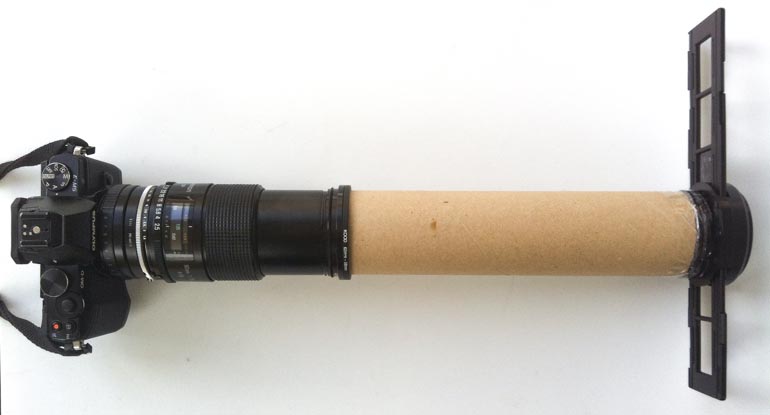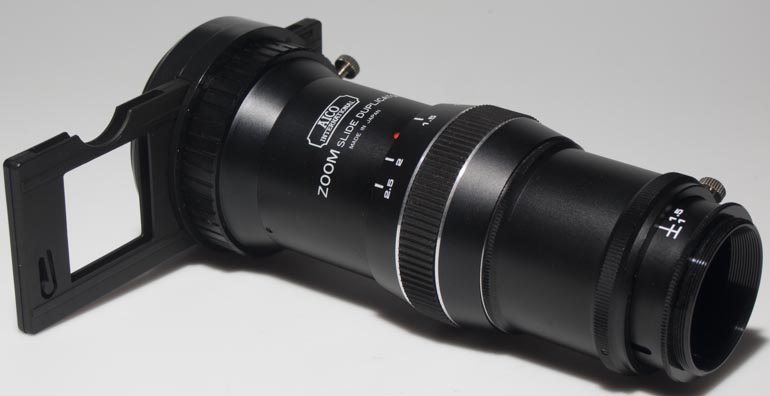If you’ve moved over to digital from film, chances are you will have a collection of film based photographs – either negatives or transparencies. If you don’t have a film scanner you can use your digital camera to digitise these old films.
I decided to do that using my Olympus OM-D. The problem I had was that the usual slide copier, such as the Aico Zoom Slide Duplicator or similar products from the likes of Jessop, Ohnar and Kenlock, is that they were designed for full frame cameras. So when the copier is mounted onto an OM-D (using a T2 mount and Adaptor from Micro 4/3 to T2 camera fitting) the image is cropped and you can only copy the centre (or edge if you adjust the frame position). You cannot copy the full frame.
An alternative is to make your own copier. I dug out the Tamron 90mm f/2.5 macro with Pentax K Adaptall 2 attached, and mounted it on the Olympus body using a micro 4/3 to Pentax Adaptor.
Any macro lens with 1:1 capability will be suitable. Attach the macro lens, turn the camera on and move the slide away from the lens until it comes into focus on the camera’s LCD. This give you a rough indication of position needed for the slide/negative.
Cut a piece of tubing (postal tubes are perfect) to the necessary length. Now find a way of attaching the tube to the lens. I used a combination of stepping rings from the 55mm of the Tamron lens up to 58mm which was the external size of the tube. The tube squeezed into the inside of the ring and locked in place. If this hadn’t worked I would have super -glued a 55mm Cokin series A adaptor to the end.
You can now position the slide negative at the other end of the tube. A budget option is to use Blu Tack to hold the slide frame on the front. You could mount negatives in a frame too. As I have a lot to copy I decided to take off the carrier part of the Aico Zoom Slide Duplicator and mount that on the front of the tube. This ensured a faster throughput of film.
The carrier has three small screws holding it in place on the duplicator. These can be loosened so the whole front section slips off. Don’t unscrew fully as the screws are tiny and fiddly to get back in.
With the custom duplicator assembled it’s time to get to work copying. You can use a household lamp as backlight illumination, or a flashgun, or sunlight. You need to diffuse the light so it’s even across the film surface. The slide duplicator carrier has a diffusing plate built in. If you’re just mounting the slide on the front of the tube put a sheet of white cloth, or several layers of tracing paper in between the film and light source.
Use the camera’s zoom focus magnifier if it has one to focus accurately, making sure the film is centered in the frame and not cropped at any edge. Adjust exposure using the LCD as a gauge. Do a few test shots to check focus, framing an exposure before rattling through your library.
In the next article I will explain how to process the copied negatives. How to process scanned colour negatives

